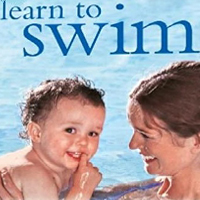Learn to Swim – whatever your age

As many people learn when they make the decision to learn to swim, almost all of the lessons available cater for children.
If you are lucky, you will find a learn-to-swim program at your local pool but it’s likely you will have to wait a long time for a place and in our experience it is unlikely you will have learned to swim a year after starting, that’s if you manage to learn at all! Read what we have to say about public pools and learn-to-swim classes under our private lessons page.
Many people would like to learn to swim but fear they are the only ones with the sort of problems they have. Frankly men are the worst for this (sorry for being sexist). Trust me, you’re far from being alone and not learning to swim because you don’t want to feel a fool while you are learning or because you think you are too old is a real shame and so unnecessary.
We have taught so many people to swim that started out being embarrassed, fearful or simply disbelieving that we almost know what you are going to say when you walk through the door. Just trust us when we say that whatever is going through your mind, others have gone before you thinking exactly the same and they DID learn to swim.
If you’ve made the decision to learn to swim, or even if you are simply just thinking about it, drop us a line and tells your fears or concerns, or what you would like to achieve, and let us tell you how we can help you learn to swim.
Do you feel that only children can learn to swim? Do the adult swimming lessons at your local pool leave you cold? Maybe you been there – done that – still can’t swim. Maybe you can’t even pluck up the courage to think about it?
Let me tell you my story.

Above is me behind the camera, so sad watching hubby swim when I’m too frightened to even go close. At 45 I got ME (chronic fatigue syndrome). At 48, having been so terrified of water all my life – I wouldn’t use the shower in case water went in my face – I decided I was fed up of being a victim and I would learn to swim.
Below is me, age 54, in Egypt the day I qualified as an Open Water Scuba diver. In between I learned to swim, qualified as an instructor, took a life guarding qualification, taught many many people to get over their own phobias and learn to swim, and finally I learn to dive.
I tried to learn to swim at my local pool and frankly was horrified. For almost 3 months I went and steadfastly refused to put my face in the water or take my feet off the bottom. I scoured the net looking for ‘learn to swim’ books that would teach me how to swim without putting my face in the water. Needless to say – there aren’t any. It was a long time before I made any progress during which time I saw the vast majority of adult swimmers give up along the way. Eventually I met Irene who shared my fears and phobias and also had decided to learn (she’s even older than me <grin>). Together we found TI swimming which teaches balance in the water and altogether different techniques to ASA swimming.
Long story short, Irene and I qualified as ASA instructors then took the best of all we had learned to put together our own ‘Learn to Swim’ methods. These we adapt for each and every student to suit their needs and swimming phobias. We also address the fact that adult swimming/learning is or should be, very different to the way children learn to swim and also that every adult learns in a different way and has different challenges in life.
Finally, this is me below, diving in the Red Sea. Take heart – you CAN learn to swim as an adult.











 <————- This is me on holiday in Tenerife 2003.
<————- This is me on holiday in Tenerife 2003.

